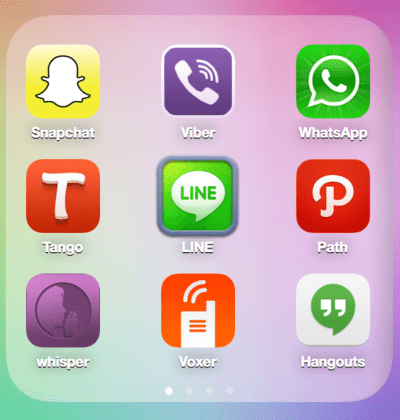
The App Store’s increasingly competitive nature may mean that only a minuscule number of apps (0.01% by 2018) become financial successes, but that hasn’t slowed down growth, either in number of applications available, or their usage. According to new data released by Flurry Analytics this morning, overall app usage in 2013 saw 115% year-over-year growth, with Messaging apps showing the most dramatic growth, up 203% year-over-year.
The rise of messaging apps was one of the most telling stories about the changing mobile application in 2013, signaling, perhaps, a slight shift away from more public social media services like Facebook, as a younger generation of smartphone users begin to have an impact on the overall ecosystem. For many of today’s teens and young adults, their lives have been plastered all over social media (thanks, mom) since they were born. Turning to more private means of communicating with friends is a notable act of rebellion, and one that could potentially spread into older demographics as well. Facebook even went on record this year, saying it was seeing declining usage among teens for the first time, though the company overall is still growing.
Says Flurry, what’s most surprising about the messaging apps category is not just the growth, but the rate of growth – greatly outpacing other popular categories. To be fair, though, Flurry counted other social and photo-sharing apps in this category, too, so it doesn’t paint a clear picture of standalone messaging apps’ growth versus that of more open, public social media, like Twitter, Google+ or Facebook, or those dedicated more to photo-sharing, like Instagram, whose private messaging component was added in December.
These messaging apps may have the potential to become platforms of their own, the report states, citing for example LINE, a Korea-owned app popular in Japan, which delivered over 100 million downloads to gaming partners three months after the launch of its game distribution platform in 2013. Meanwhile, Tencent’s WeChat teamed up with device maker Xiaomi to launched a new smartphone aimed at WeChat users. 150,000 devices were sold in under 10 minutes through a messaging application, which hints at messaging apps’ capabilities to sell physical products, too.
However, while messaging/social apps saw the most growth in 2013, other app categories did well, too. For instance, the Utilities and Productivity apps category posted 149% year-over-year growth, signaling how smartphones and tablets are becoming users’ personal computers, explains Flurry. (Or maybe, how mobile users themselves are now becoming more sophisticated, and looking for tools that help them make more out of their mobile devices? Rather than just using phones and tablets for basics like web search, maps and email, or time-wasting activities, like games, they’re starting to move toward more complex applications as personal computer usage declines.)
Meanwhile, even gaming, which some had feared was reaching saturation levels, saw 66% year-over-year growth in 2013, Flurry notes.

Overall, though Flurry found earlier that the rate of growth of app downloads may be slowing, app usage and engagement is on the upswing yet, with the above-mentioned 115% year-over-year growth.
Today’s report was based on over 400,000 apps in Flurry Analytics’ system, which makes the figures relevant in terms of their sample size
No comments:
Post a Comment